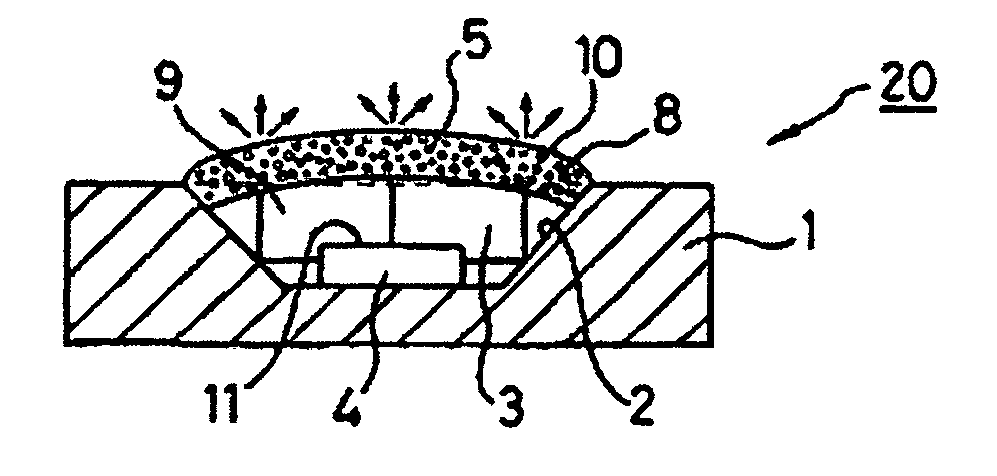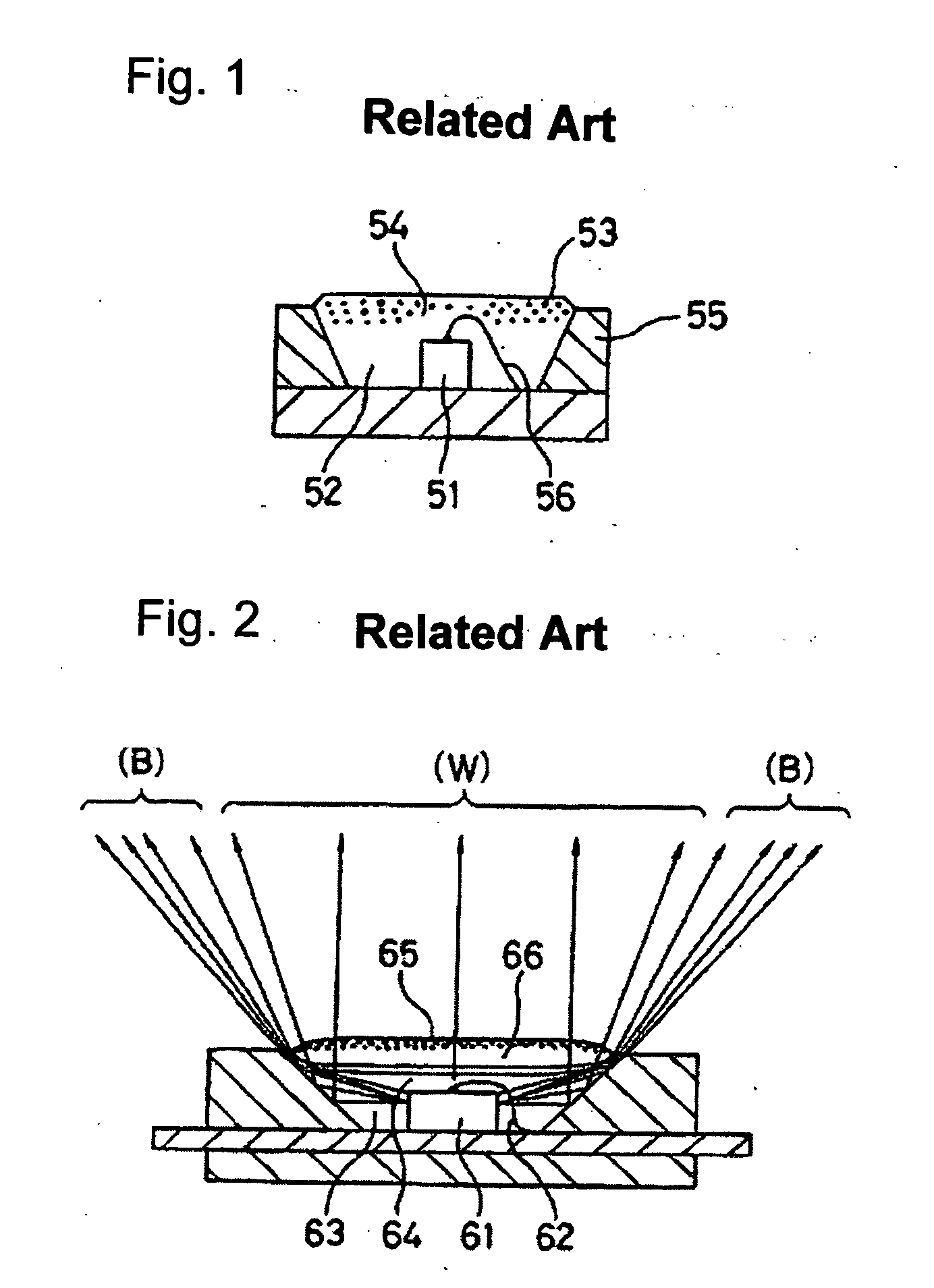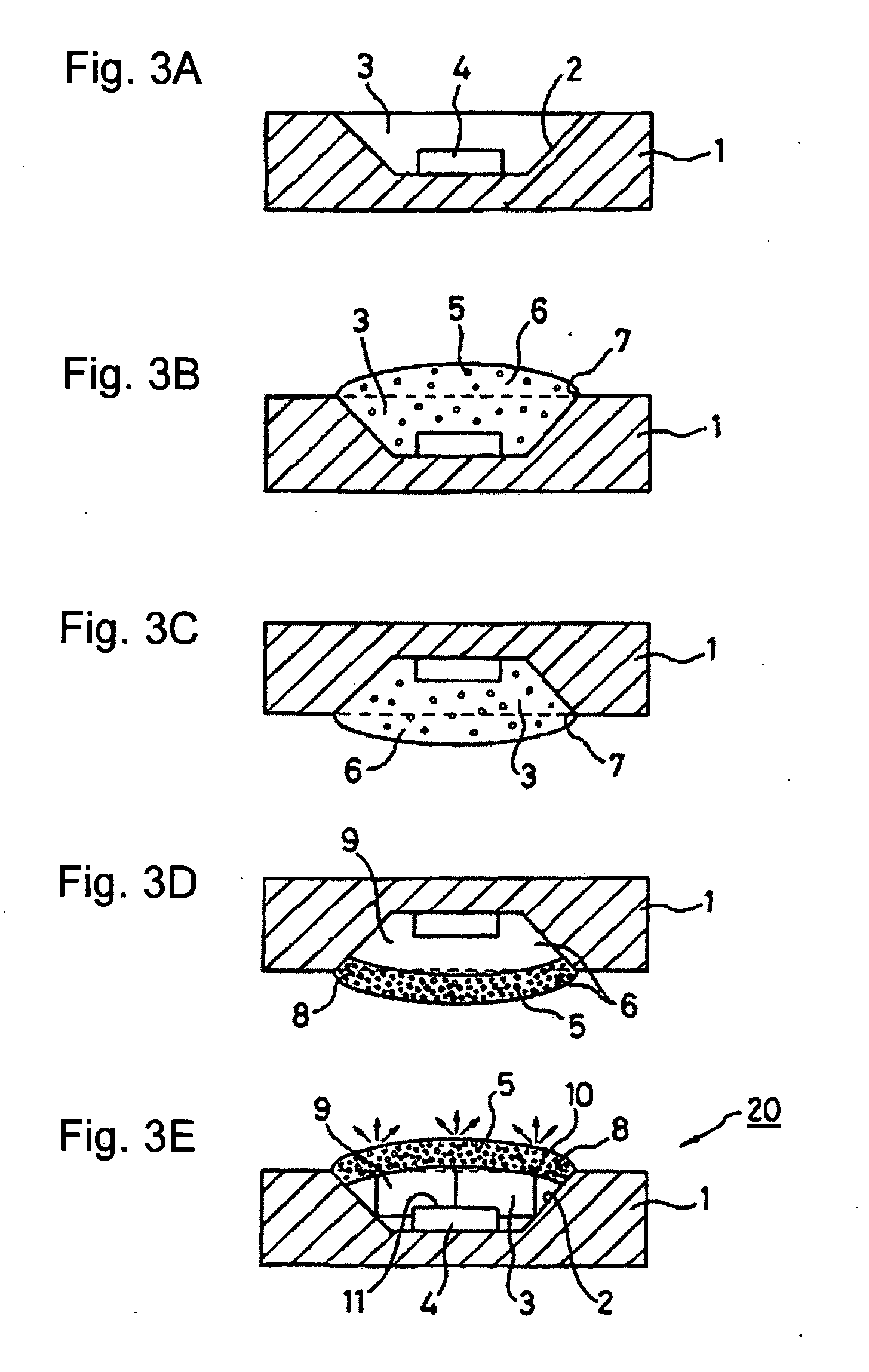Semiconductor light emitting device and method of manufacturing the same
- Summary
- Abstract
- Description
- Claims
- Application Information
AI Technical Summary
Benefits of technology
Problems solved by technology
Method used
Image
Examples
Embodiment Construction
[0036] The following is a detailed description of exemplary embodiments of the invention, with reference to FIG. 3A through FIG. 3E, FIG. 4, and FIG. 5A through FIG. 5E. In these figures, identical members are labeled using the same symbols, and in some cases, descriptions of these common members are omitted. Although the following embodiments are exemplary of the invention, the invention is in no way limited to the embodiments presented below.
Exemplary Embodiment of FIGS. 3A-3E
[0037]FIG. 3A through FIG. 3E are process diagrams showing an exemplary embodiment of a method of manufacturing a semiconductor light emitting device made in accordance with the principles of the invention. First, as shown in FIG. 3A, a cavity 3 can be formed in a casing 1 produced from an opaque resin with a high reflectance, and the inner peripheral surface of this cavity 3 can function as a reflective surface 2. A semiconductor light emitting element 4 can be disposed within the flat bottom portion of th...
PUM
 Login to View More
Login to View More Abstract
Description
Claims
Application Information
 Login to View More
Login to View More - R&D
- Intellectual Property
- Life Sciences
- Materials
- Tech Scout
- Unparalleled Data Quality
- Higher Quality Content
- 60% Fewer Hallucinations
Browse by: Latest US Patents, China's latest patents, Technical Efficacy Thesaurus, Application Domain, Technology Topic, Popular Technical Reports.
© 2025 PatSnap. All rights reserved.Legal|Privacy policy|Modern Slavery Act Transparency Statement|Sitemap|About US| Contact US: help@patsnap.com



